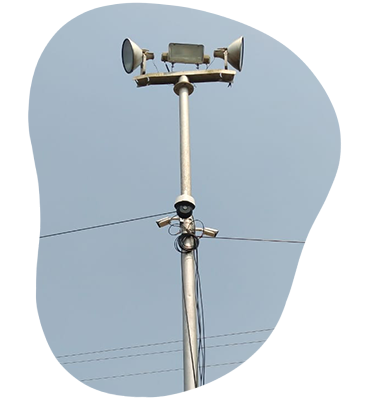BSF
(Border Security Force)

Exceptional Delivery of CCTV Surveillance Systems to the Border Security Force (BSF) at Berhampore, Malda, and Jaisalmer, featuring PTZ and Bullet Cameras
About the Project:
The BSF (Border Security Force) surveillance project aimed to strengthen border security across multiple critical areas in India, including Berhampore and Malda in West Bengal near the Bangladesh border, and Jaisalmer in Rajasthan along the Pakistan border. These regions faced various security threats, such as gold and cattle smuggling, as well as potential terrorist activities and smuggling along the Pakistan border.
Technologies Used:
The project heavily relied on IP-based CCTV systems, interconnected through Optical Fiber Cable(OFC) connectivity to establish a robust surveillance backbone.
IP-based CCTV Systems:
Description: The project utilized IP-based CCTV systems, which are advanced surveillance cameras that capture and transmit video and audio data over Internet Protocol (IP) networks.
Purpose: IP-based CCTV cameras are strategically positioned along the border regions to monitor activities in real-time, providing situational awareness and quick response to security incidents.
Project Objectives
We were tasked with providing a surveillance infrastructure to the Border Security Force (BSF) for the West Bengal and Rajasthan borders with India’s neighboring countries of Bangladesh and Pakistan.
Preventing Gold and Cattle Smuggling in the West Bengal Border:
Objective: To curb and deter illegal activities, particularly the smuggling of gold and cattle, along the border regions of West Bengal.
Approach: The project employed surveillance technologies and strategies to monitor and respond tosmuggling attempts effectively. This includes the deployment of CCTV cameras, border patrols, andintelligence gathering to detect and deter smugglers.
Countering Pakistan Terrorist Activities and Smuggling across the Rajasthan-Pakistan Border:
Objective: To provide security measures to prevent terrorist activities and smuggling attempts across the Rajasthan-Pakistan border.
Approach: The project employs a multifaceted approach, combining technology, intelligence, and border enforcement. This includes the deployment of surveillance systems, strengthening border patrols, intelligence sharing, and coordination with law enforcement agencies to detect and deter terrorist activities and smuggling
How We Helped?
BSF (Berhampore - Kolkata, West Bengal):
Installation of 60 PTZ(Pan-Tilt-Zoom) cameras
Deployment of 209 static bullet cameras.
BSF (Malda - Kolkata, West Bengal and Bangladesh Border):
Installation of 49 PTZ cameras
Deployment of 192 static bullet cameras.
BSF (Jaisalmer, Rajasthan and Pakistan Border):
Installation of 28 PTZ cameras
Deployment of 119 static bullet cameras.
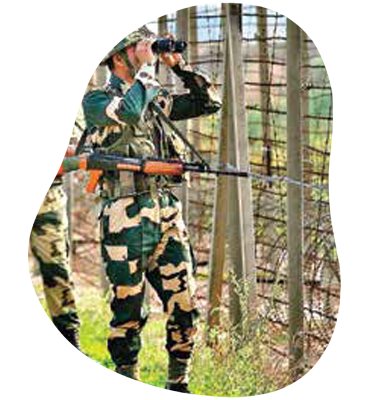
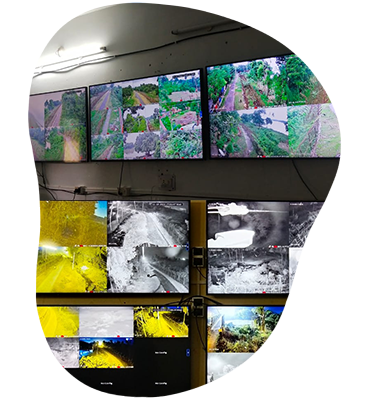
The Challenges
Many of the sites along the borders did not have access to power during the day, as they only had BFL poles lighting up at night time.
Due to the remote locations of many of the sites, it was difficult to execute the necessary civil works, such as pole erection and cable laying.
Some locations lacked the infrastructure necessary for wired solutions, particularly due to the absence of poles for cabling over long distances.
Stable connectivity across river bodies was a significant challenge. The remote islands and varying water levels made it difficult to maintain consistent communication links.
Certain locations lacked reliable power access, complicating the installation and continuous operation of surveillance equipment.
Solutions to Challenges
Provided 1 KVA inverter UPS systems with 150AH batteries to confirm power backup during daytime power supply issues. These systems charged during nighttime hours and provided backup for 8 to 12 hours during the day
Adopted a proactive approach to overcome logistical challenges in remote locations.
In locations where wired connections was not feasible, a wireless solution was implemented. Point-to-point wireless communication technology enables data transmission between two fixed points, effectively bridging gaps where cabling is impractical.
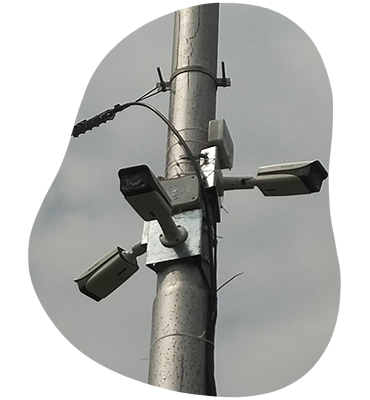
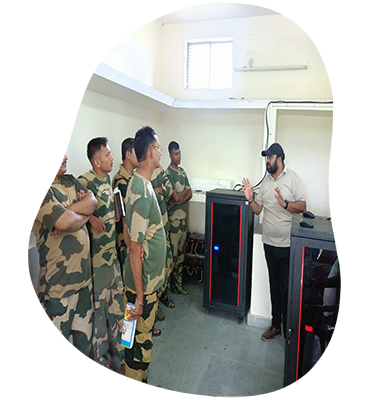
To enable point-to-point wireless communication, tower infrastructure erected at strategic locations along the border. These towers hosted the necessary equipment for wireless data transmission.
For proper connectivity across river bodies, wireless radio technology was employed. This technology was used to connect remote islands at 4 locations, utilizing 8 towers equipped with transmitters and receivers. The towers or poles were erected at a height of 15-20 meters to maintain stable connections across the water, making it possible to connect distant locations.
In locations without reliable power access, independent solar poles were installed. These solar poles provided a sustainable power source for the surveillance equipment for continuous operation without dependence on the conventional power grid.
Outcome
Border Security: The installation of over 657 high-quality CCTV cameras significantly improved border security in these critical regions.
Reduced Smuggling Activities: The project successfully curbed gold and cattle smuggling along the West Bengal borders, leading to a reduction in illegal activities in these areas.
Improved Counterterrorism Measures: Along the Rajasthan-Pakistan border, the project bolstered security measures, reducing the risk of terrorist activities and smuggling attempts.
Surveillance Infrastructure: The deployment of IP-based CCTV systems with OFC connectivity established a robust surveillance infrastructure that can adapt to evolving security needs.
